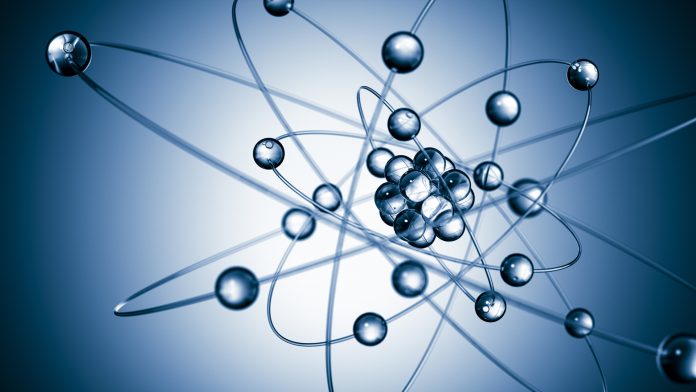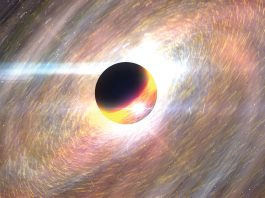Caltech’s Professor Harvey Newman discusses his success in particle physics and provides a view to the future of the field.
Caltech’s Professor Harvey Newman’s research has focused on searches for new particles at colliders at the highest available energies over the last 50 years, at Harvard, DESY in Hamburg and CERN in Geneva. From 1978-1982 he co-led the MARK J collaboration at DESY that discovered the carrier of the strong force, the gluon. Since 1994 he and his group at Caltech have had central roles in the CMS experiment, which discovered a new particle: the long sought Higgs boson, as well as in precision measurements of Standard Model processes, and in wide-ranging searches for Beyond the Standard Model physics.
In an interview with The Innovation Platform’s International Editor, Clifford Holt, Newman discussed some of his past successes as well as his views on the future – including his own research priorities and those which may be defined in the next Snowmass study.
How has the discovery of the Higgs boson affected your research activities? Where do your priorities now lie?
The search for the Higgs boson has been one central focus of my research for the last 40 years or so, along with many searches for new physics, from my work at the Large Electron-Positron Collider (LEP) and then more recent activities at the LHC at CERN. I also have had many students and staff who are actively involved in Higgs boson-related activities.
One of the main enablers of this research has been the development of particle detection technologies, which are necessary if we are to precisely identify and measure the particles. Alongside this, I have also worked on many other key technologies which are used in the LHC and elsewhere, including detector technologies for electrons and photons, and the key technologies for the detection of muons, which in terms of the pathways to discoveries in physics are some of the most important ways in which Z bosons and other heavy particles decay.
Since I arrived at Caltech in 1981, my group and I have continued to develop and work on the use of heavy crystal scintillators, which are a way to precisely measure electrons and photons. I had seen some successes at the Large Electron-Positron Collider that were pivotal in establishing the unified electroweak theory; but at that time it wasn’t well understood – and some did not believe it possible. If such crystals could survive and function well in the severe environment of a hadron collider, which has enormous background radiation levels. Nevertheless, we went on to develop scintillators and to calibrate them for the Superconducting Super Collider which was, of course, never operational.
As the years went on, at the crystal laboratory which I started when I first arrived at Caltech, we found another fast and very bright scintillator that could be used at the next phase of the LHC physics programme, known as the High Luminosity LHC, or HL-LHC. However, this approach was not accepted – although my colleagues and I did go on to find that this will be very useful to make a specialised detector with very precise timing and which therefore has the potential to deal with the extremely complex and challenging environment of the HL-LHC. Indeed, in addition to its ability to detect particles, this detector can also provide a very precise timestamp which, together with the other information, is another handle that can be used to decipher which interactions are of interest amongst the enormous flux of already understood ‘background’ interactions.
Throughout the course of my career, I have also been actively engaged in developing scientific networks. This began once I had completed my PhD, as I knew that I would work overseas at the CERN and DESY laboratories in Europe, but I needed to remain connected to the community at home. From 1985 to 2015, I also developed, operated and managed the networking between the USA and CERN to support first the experiments at the Large Electron Positron Collider and then, more recently, the Large Hadron Collider, with my colleagues at the Energy Sciences Network, supported by the Department of Energy (DOE).
What have been the biggest challenges you have experienced in terms of achieving the photon calorimetry measurements necessary for the search for the Higgs and other exotic particles?
Perhaps the biggest challenge was in relation to the question of radiation damage. We went through quite an interesting period of measuring the properties of materials in an effort to overcome this, and also to try to understand them fundamentally.
An additional challenge relates to extracting the signal from the background. There are now very sophisticated methods based on machine learning being used to help identify the electrons, photons, Z bosons and other particles produced in the collisions to extract the signals, but it has taken some years to reach that point and progress in this fast-moving field continues.
How are you involved in the search for dark matter at the CMS experiment? How do you expect this search to evolve moving forwards?
The discovery of the Higgs boson demonstrated that Nature behaves in a very simple way, with the masses of elementary particles coming from their interaction with the so-called ‘Higgs field’. Yet, this amazing and simple picture of the Universe also means that the limitations of the Standard Model have been further highlighted. For instance, the Standard Model does not include dark matter candidates. We know that dark matter exists because we can see its effects – in the rotation of galaxies and through gravitational lensing etc. – but we do not know what it is and there is no place in the Standard Model for the particles that make it up.
In addition, the Standard Model is also inadequate at the energy scales of the early Universe, and so something needs to be added to stabilise the theory. Supersymmetry was the most compelling answer; it not only has dark matter candidates, but it also works at the energy scales seen in the early Universe. It brings together the symmetries of particle physics and space time, which is an extremely compelling idea.
The discovery of the Higgs boson and the simple picture of Nature that it paints, does not mean that we have to give up on supersymmetry. And if it’s still out there, then I believe that we will find it at a mass/energy scale that we are set to investigate relatively soon, between now and the completion of the HL-LHC programme. Of course, there is always the possibility that we will find something other than supersymmetry – possibly a variant of it or something else entirely. From a physics point of view, we are perhaps perfectly placed for the future: we are here to understand how Nature works, and the fact that Nature is much more subtle than previously thought means that when we do finally begin to uncover some of these secrets, those discoveries will be that much more of a revolution.
In terms of US research, what are your thoughts on/hopes for Snowmass 2021?
The USA has found itself in a rather odd position. It is the largest national contingent in the most significant physics programme at the LHC, but as much as CERN is a marvel of international co-operation and the building of global science programmes where everybody can participate, it nevertheless exists outside of the United States. Meanwhile the US, which has the means and the tradition in terms of its academia and research infrastructure to lead in the field (and which is used to leading), doesn’t have its own accelerator.
There is a sense that the USA is coming to recognise the value of having a world-leading science programme within its own borders, and so the current Snowmass, involving the whole US community and some international colleagues, will explore some of the possible ways that could happen (although, of course, that is not the only thing being considered).
As a result of COVID-19, the decision has been made to delay completion of the 2021 instalment of Snowmass by one year, and the overall schedule for the Snowmass process and the subsequent P5 panel will be adjusted accordingly.
To return to the idea of a new accelerator in the US: do you think this will now be prioritised?
The United States has recently signed an agreement to collaborate in the study and R&D for the Future Circular Collider at CERN, the first phase of which is planned to be an electron positron collider. We believe that it, and the higher energy hadron collider proposed for the farther future, will offer unprecedented sensitivity to signs of new physics in a realm that is currently inaccessible. While it will be some time for that to be achieved, being on this trajectory is very important for the future progress of physics and more broadly the progress of science, and the United States is a part of it.
While there are no approved plans to build an accelerator in the US as of yet, there have been discussions of several possibilities, including constructing a muon collider. Such a collider would enable us to reach multi-TeV energies, and so it is important that it is considered alongside the other possibilities.
How do you expect your research priorities to develop in the future?
My team and I will, of course, continue to respond to the developments that we see emerge in fields such as machine learning. Meanwhile, perhaps the biggest thing will be if we discover something new or beyond the Standard Model, and I am already pursuing several powerful lines of research to that end.
Please note, this article will also appear in the fifth edition of our quarterly publication.









